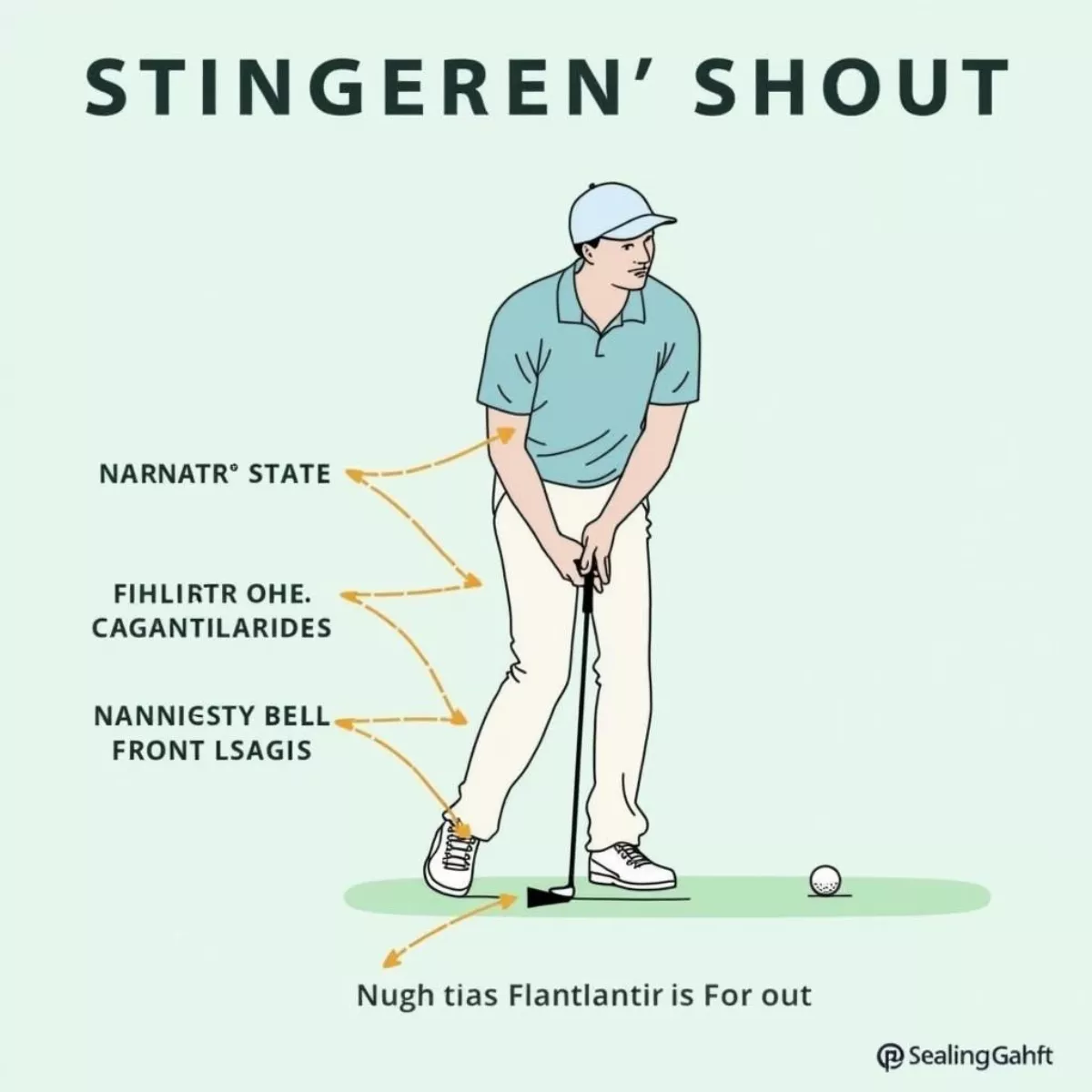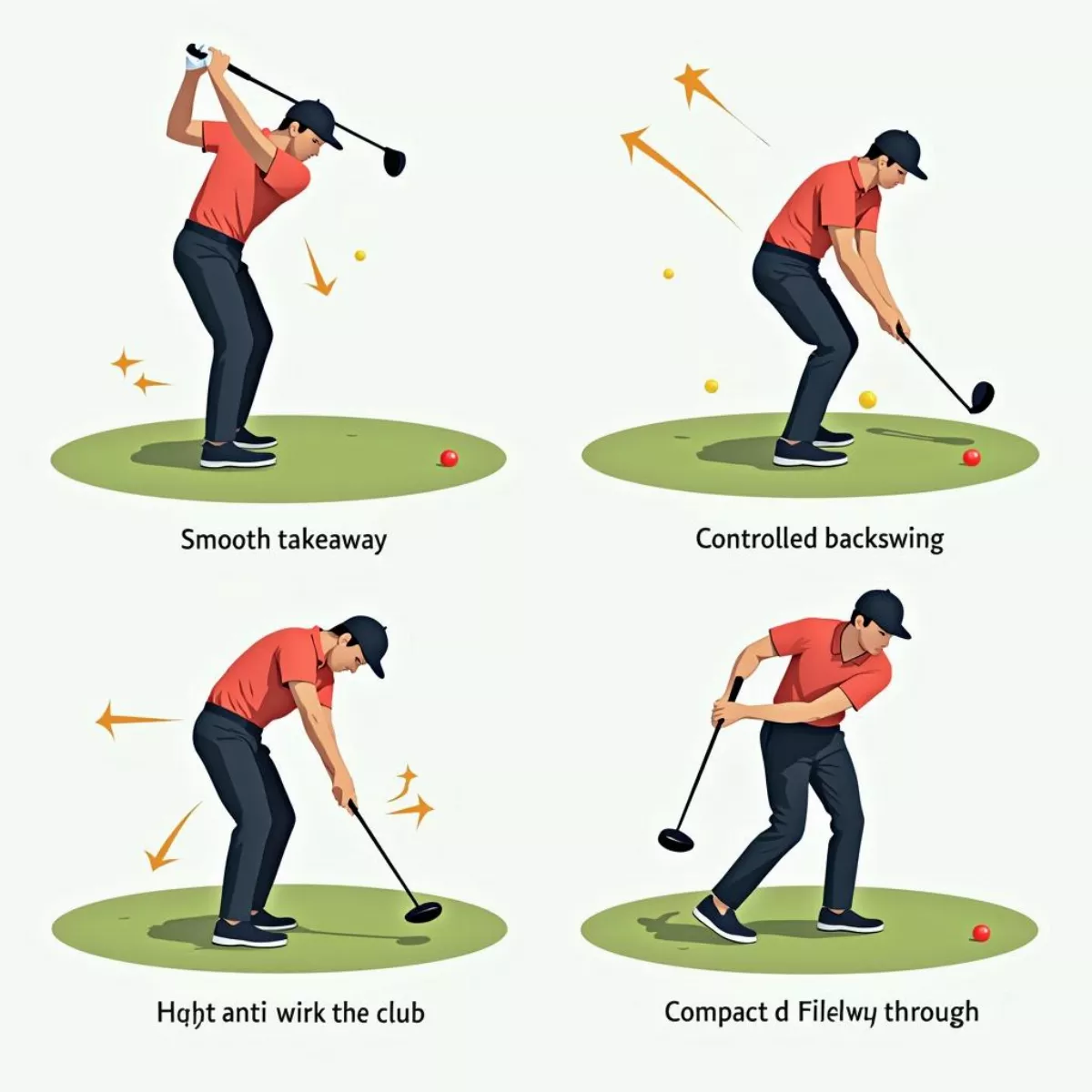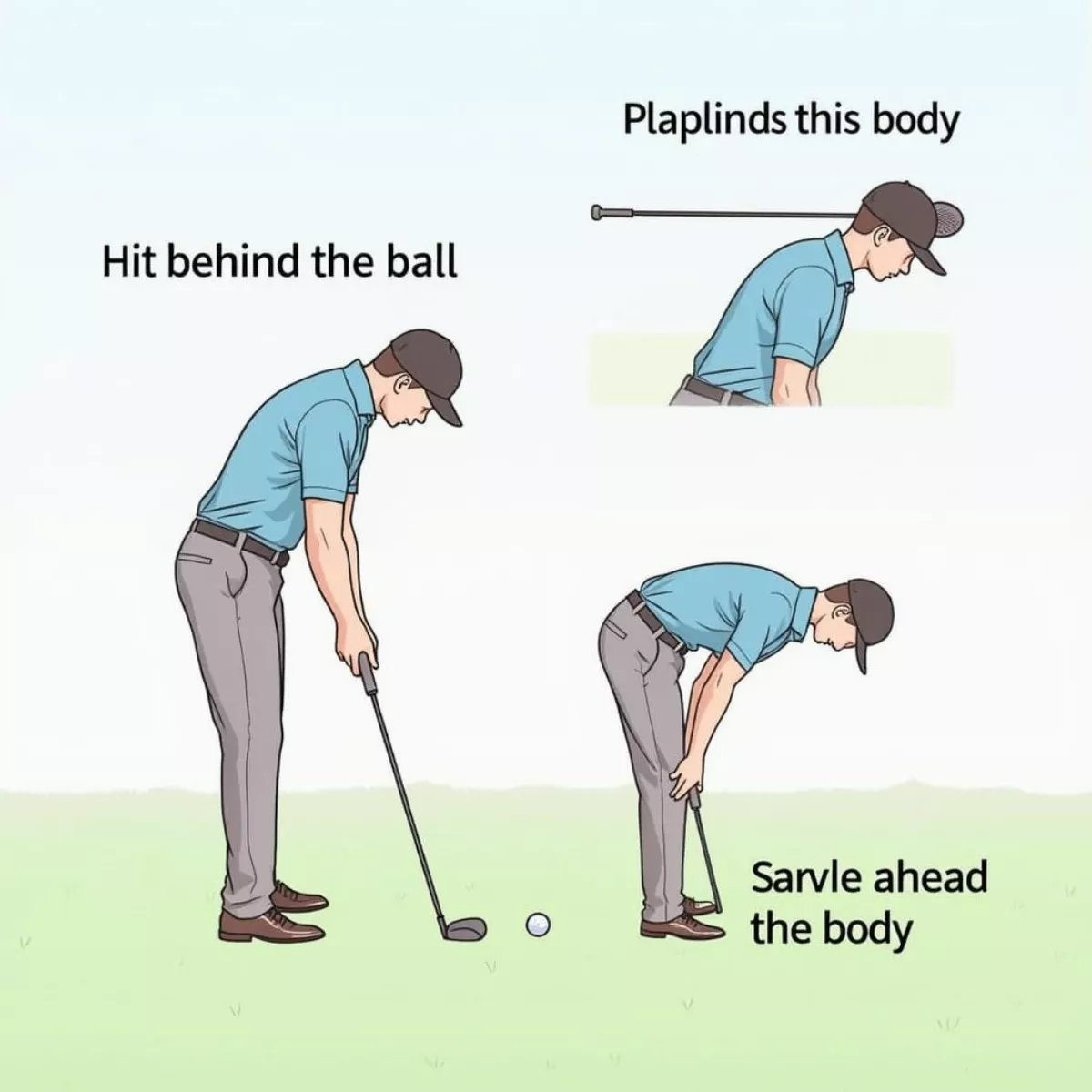Golf can be as unpredictable as it is thrilling, especially when the weather decides to throw a curveball your way. Enter the stinger golf shot, a powerful tool in a golfer’s arsenal that can help players navigate tricky conditions—like wind, uneven lies, or dense rough—while keeping the ball low and penetrating through the breeze.
In this guide, we’ll break down everything you need to know about the stinger shot, how to execute it, its benefits, and when to put it to use. So, grab your clubs and let’s dive in!
What exactly is a Stinger Golf Shot?
A stinger shot is a low, controlled golf shot typically executed with a long iron—though it can be done with hybrids and woods, too. The goal is to produce a powerful strike that minimizes air resistance, allowing the ball to pierce through wind and travel substantial distances.
This shot type gained widespread popularity from pro golfers like Tiger Woods, who has used it with great success throughout his career. Waves of players have followed suit, incorporating this effective technique into their own games.
 Tiger Woods Hitting Stinger Shot
Tiger Woods Hitting Stinger Shot
Why Use the Stinger?
- Windy Conditions: A stinger keeps the ball lower to the ground, making it less susceptible to strong gusts.
- Control: The shot provides a greater degree of control, allowing players to better position their ball on the fairway.
- Distance: Surprisingly, a well-executed stinger can travel long distances due to its low trajectory and reduced air resistance.
- Versatility: It can be used from the tee or the fairway, making it adaptable to various golfing situations.
The Mechanics of a Stinger Shot
Setup
- Grip: Use a neutral grip to maintain control over the shot. A slightly stronger grip can help encourage a more downward strike.
- Stance: Adopt a slightly narrower stance than usual. Position your feet together—this will help promote a more centralized swing path.
- Ball Position: Place the ball slightly back in your stance (approximately middle to back). This encourages a downward strike on the ball.
- Weight Distribution: Shift your weight slightly to your front foot. This will help you make a descending strike, which is integral for a successful stinger.
 Golfer Stance for Stinger Shot
Golfer Stance for Stinger Shot
Swing Process
- Takeaway: Start your swing with a smooth takeaway. Keep your hands and chest together to maintain control.
- Backswing: Make a three-quarters backswing. Avoid over-rotating your shoulders, as this can lead to excessive angle and height.
- Downswing: Transition smoothly into your downswing while ensuring your hands lead the club. Aim to strike the ball first, followed by a divot (ground) just after.
- Follow Through: Keep the follow-through compact; rounding out your swing will help maintain that low trajectory.
 Stinger Golf Shot Swing Sequence
Stinger Golf Shot Swing Sequence
Visualization and Practice
Visualize the flight path of the ball low and straight. Practice hitting with purpose! Consider using alignment sticks or markers on the range to improve accuracy.
Tips for Perfecting Your Stinger
- Choose the Right Club: A long iron (like a 3- or 4-iron) is ideal for achieving the perfect stinger trajectory.
- Practice Consistency: Dedicate time during practice rounds to work solely on stingers. Repetition fosters muscle memory.
- Modify Your Setup: Experiment with varied ball placements. Knowing how small changes in setup affect your shot will significantly improve your execution.
- Think Wind: Practicing your stinger shot on windy days can help sharpen your skills when conditions are less than ideal.
- Watch the Pros: Analyze professional golfers who execute the stinger shot successfully. Observe their setups and swings. There’s always something to learn!
Common Mistakes to Avoid
Here are some pitfalls to watch for:
- Too Much Height: Failing to keep your hands ahead of the clubhead at impact can result in too much loft.
- Over-Rotating: A common error, especially for beginners. Keeping the body rotation controlled and smooth is critical.
- Inconsistent Striking: Ensure you achieve a ball-first strike; if you’re frequently hitting behind the ball, reassess your weight distribution and ball position.
 Common Stinger Shot Mistakes
Common Stinger Shot Mistakes
Key Takeaways
- A stinger golf shot is key for low, penetrating hits, especially in windy conditions.
- Proper setup is vital: grip, stance, ball position, and weight distribution are crucial elements of execution.
- Practice is essential for consistency and performance on the course.
- Avoid common mistakes, including over-rotation and improper striking.
Frequently Asked Questions (FAQ)
1. Can I use the stinger shot with a driver?
While it’s primarily used with long irons, experienced players sometimes execute stinger-like shots with drivers, but it’s not as common.
2. What is the best club for a stinger shot?
Typically, a 2-, 3-, or 4-iron works best. However, hybrids can also be used effectively.
3. Will practicing stingers help my other shots?
Yes! It enhances your overall ball control and helps develop a more consistent swing path.
4. How low should the shot trajectory be?
Aim for a trajectory that stays below head height. This helps the ball cut through wind effectively.
5. Is the stinger only for experienced players?
Not at all! Beginners can learn this shot with practice and proper guidance.
6. Should I adjust my grip strength when hitting a stinger?
You may consider using a slightly stronger grip to encourage a better downward angle.
7. How can I practice effectively?
Use alignment sticks and mark targets on the range. Focus on ball striking and control over distance.
8. What’s the ideal ball position?
Place the ball slightly back in your stance to encourage a downward strike.
9. Can the stinger be hit with wedges?
While not common, you can attempt a stinger-like shot with a wedge, especially in low lies, but it requires advanced skill.
10. Should I practice the stinger in varying weather conditions?
Absolutely! Practicing during windy days will significantly enhance your stinger skills.
 Golfer Celebrating Successful Stinger Shot
Golfer Celebrating Successful Stinger Shot
By incorporating the stinger shot into your repertoire, you’ll not only impress your playing partners but also gain more confidence in handling challenging golf conditions. With focused practice and a clear understanding of the mechanics, you can master the stinger shot and lower your scores on the course.
Happy golfing, and may your stinger shots be ever on target!